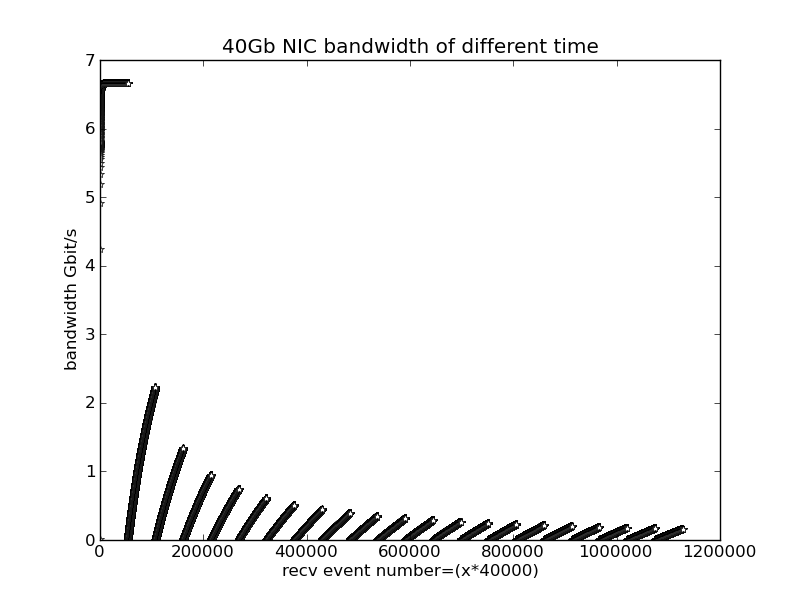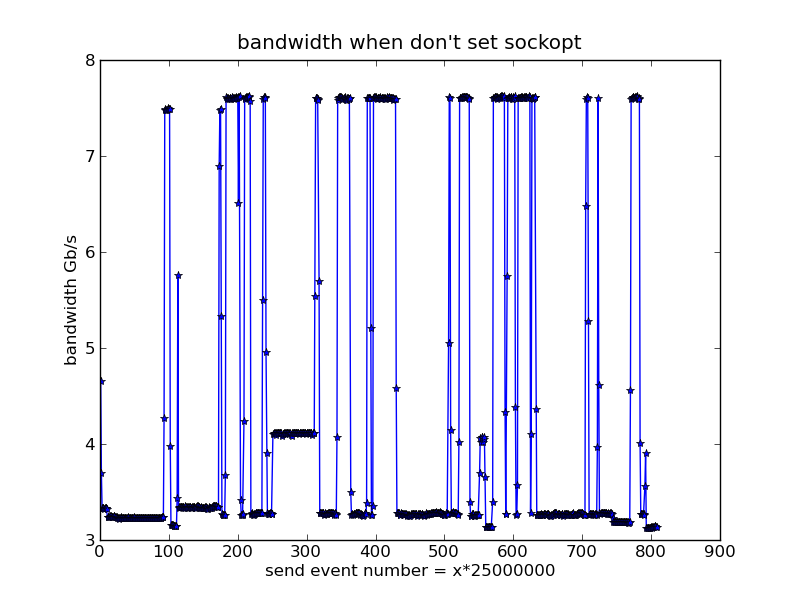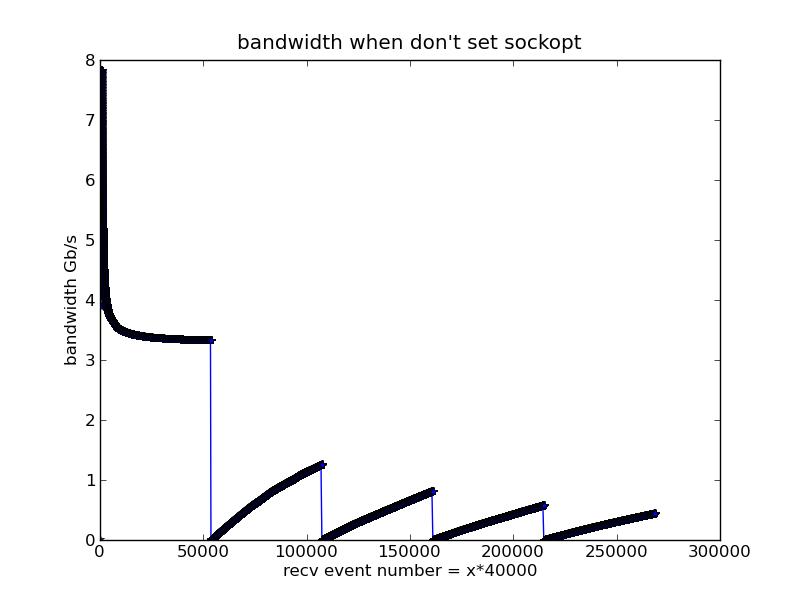在不带组装,取数线程简化为直接while循环recv,通过setsockopt将SO_SNDBUF, SO_RCVBUF设置为256*1024时,短时间内的测试结果为6.7Gb/s。但是长时间的测试结果却如下图:

上图的横坐标为ROS接收到event的个数,以40000为单位。
(x, y)表示 ROS接收到第 x*40000 个 event 时,接收端的带宽为 y Gbits/s. event size 为 2KB.
由上图可以看出,接收端的带宽在保持了一段时间的6Gb/s后,是不断降低的。但是发送端的带宽一直都是保持在6.4Gb/s以上。
send speed : 6.45782Gb/s send speed : 6.45631Gb/s send speed : 6.43146Gb/s send speed : 6.44313Gb/s send speed : 6.37502Gb/s send speed : 6.44647Gb/s send speed : 6.45929Gb/s send speed : 6.37766Gb/s send speed : 6.39508Gb/s send speed : 6.44929Gb/s send speed : 6.45014Gb/s send speed : 6.44203Gb/s send speed : 6.44749Gb/sq send speed : 6.42823Gb/s send speed : 6.43295Gb/s send speed : 6.44113Gb/s send speed : 6.44306Gb/s send speed : 6.41997Gb/s send speed : 6.44833Gb/s send speed : 6.42745Gb/s send speed : 6.44259Gb/s ...
这个SO_SNDBUF,SO_RCVBUF的设置是有问题的吧? 是只设置接收端的SO_SNDBUF与SO_RCVBUF,不设置发送端的原因导致的吗?还是这个设置值的大小有问题?这个值应该设为延时带宽乘积?
在发送端和接收端不设置SO_SNDBUF, SO_RCVBUF这两个选项时,测试的结果为:
发送端:

接收端:

今天查看了一下接收端程序,发现是因为计数用的count溢出了,导致出现上面的阶梯状带宽曲线。